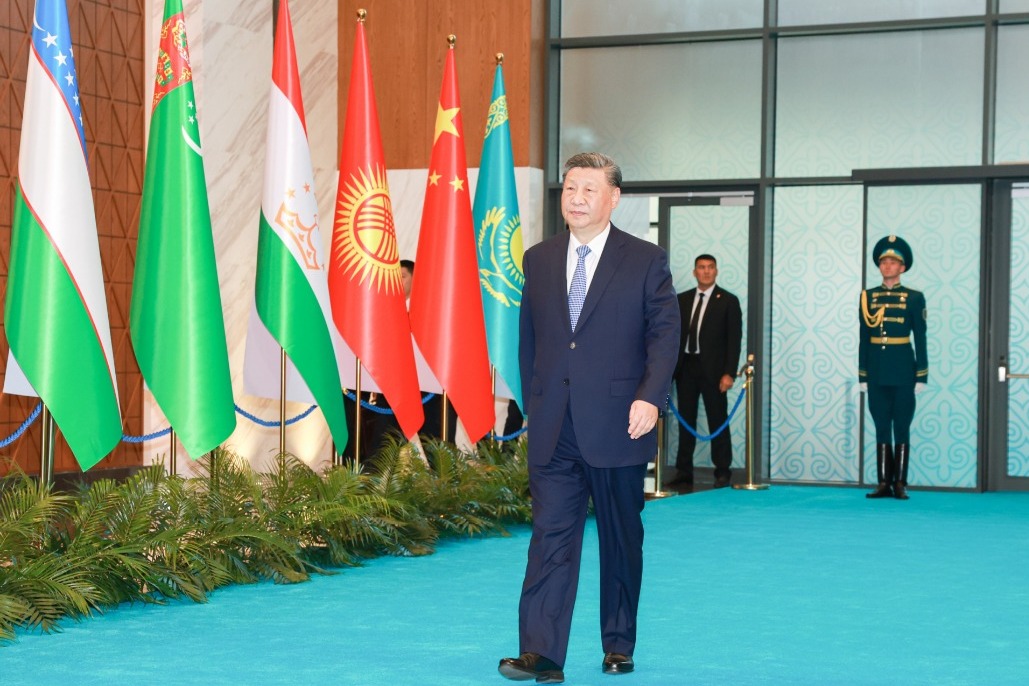Grinch steals Christmas in Europe

China should pattern its business model on balanced domestic growth, rather than exports
Christmas is an occasion for family and friends to get together and celebrate a time of joy and love. It is also a time for reminiscing and sharing.
No Christmas would be complete without the piles of boxes under the trees filled with toys that Santa has brought for all the good boys and girls.
But with the European debt crisis continuing and the recovery in the US economy still on rocky ground, one must wonder if Santa is really coming to town this year.
China's export data for November shows a grim picture, with total exports reaching $174.5 billion (130.7 billion euros), up just 13.8 percent year-on-year, the slowest rate since 2009. What may be more concerning for children around the world, however, is that exports of toys, as defined by China Customs, fell 2 percent year-on-year in November to $913 million after experiencing single digit growth in each month since April.
In one way, it is possible to look at this situation and say that these are just extraordinary times and that exporters can get back to business as usual in the future. One could argue that the current situation in Europe is a one-off event and that the US economy is showing signs of recovery.
In fact, exports to the US remained robust in November, rising 17 percent year-on-year (the highest growth since April) and staying at around $30 billion for the fifth straight month, indicating that the Grinch may only be stealing Christmas in Europe, where exports rose by just 5 percent, down from as high as 22.3 percent earlier this year.
Although the current situation seems temporary, it may be years before Europe fully resolves some of its problems, while the US household sector cannot return to its previous debt-fueled spending. US household sector debt to gross domestic product (GDP) stands at just under 90 percent as of the first quarter this year, up from around 50 percent in the mid-80s. Between 2000 and 2007 alone, US household sector debt nearly doubled to $13.8 trillion.
Even if demand from Europe and the US returns, China's exporters have other long-term problems to deal with. Labor costs are already increasing and are likely to continue on their current trajectory. This is particularly the case given expectations from the National Bureau of Statistics that the nation's working-age population will begin shrinking from 2013.
At the same time, the Chinese yuan is set to continue its path of gradual appreciation against the dollar, putting further pressure on the margins of Chinese exporters and making them less competitive against exporters from other nations in the region such as Vietnam and Cambodia.
One way to deal with this, of course, is to focus more on the domestic market. While companies will still have to deal with rising labor costs, a stronger yuan could actually be beneficial if these companies can increase sales domestically, as the cost of importing dollar-denominated raw materials would fall.
In fact, as anyone who has traveled to a major Chinese city recently would tell you, this strategy is already under way, with Christmas trees and endless strings of light popping up everywhere you look.
Another way that China can deal with this is to switch the focus away from low-end manufacturing businesses such as toys and textiles into more high-end manufacturing. The government has already begun to encourage the manufacture of more high-end goods, giving tax breaks and subsidies to these sectors. This includes goods such as airplanes, high-speed railways and a wide range of power equipment for the new energy sector.
Either way, this time of year is a good time for change. On Dec 26, one starts to see the naked shells of once beautifully decorated Christmas trees littering the streets, while piles of empty boxes remind us of the fun we've just had. Just five days later, people across the world prepare to celebrate the coming of the New Year, making endless resolutions to commit to new personal goals or change their habits over the next 12 months.
When Dec 31 comes around this year, China should make a resolution to change its business model away from an export-reliant economy to more balanced growth domestically. Whether the exporters want to start selling more into the domestic market or adjust their business model to focus on more high-end goods, these changes need to happen faster than they currently are in order to keep people in jobs.
The author is a financial analyst at North Square Blue Oak, a London-based brokerage house.
Today's Top News
- It only takes one to make a reckless move, but the whole world will have to foot the bill: China Daily editorial
- New Zealand stands to benefit from openness: China Daily editorial
- Xi talks with Putin over phone
- US can't reverse re-globalization trend
- Chinese citizens moved to safety amid Mideast conflict
- Nation set to further advance financial opening-up






























